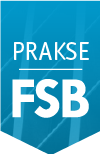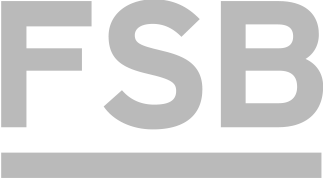International Exchange
Course details
Student Mobility > Programmes and Courses > Courses in English > Course detailsFundamentals of Ship Vibration
- Teaching: Completely taught in English
- ECTS: 5
- Level: Graduate
- Semester: Winter
- Prerequisites:
- None
- Load:
Lectures Exercises Laboratory exercises Project laboratory Physical education excercises Field exercises Seminar Design exercises Practicum 30 0 30 0 0 0 0 0 - Course objectives:
- Presentation of the basic notions of the vibration theory and ship vibration. Definition of vibration problems and consideration of possibilities for their solutions. Reliable prediction of vibration level in the ship design stage. Review of vibration measurement procedures and vibration remedy.
- Student responsibilities:
- Grading and evaluation of student work over the course of instruction and at a final exam:
- 3 preliminary exams written exam oral exam
- Methods of monitoring quality that ensure acquisition of exit competences:
- student"s survey
- Upon successful completion of the course, students will be able to (learning outcomes):
- After successfully completed course, the student will be able to: - Integrate advanced mathematics (particularly differential equations), Mechanics I, II, and Strength of materials in the analysis of vibrations of mechanical systems, - Calculate natural frequency of discrete and continuous vibration systems, - Calculate the amplitude of forced vibration of discrete and continuous vibration systems, - Estimate the specific effects of stiffness, inertia and damping - Solve dynamic problems, - Integrate mathematics in the calculations of vibrational behavior of simple models of mechanical systems and comment their vibrational behavior - Calculate the basic geometrical and inertial characteristics required for the calculation of global vibrations of ship hull.
- Lectures
- 1. Single degree of freedom system. Excitation by harmonic force, impulsive force and general force.
- 2. Single degree of freedom system. Support excitation. Review of instruments for vibration measurements. Vibration exciter, vibrograph and accelerograph.
- 3. Flexural beam vibration. Differential equation. Free and forced vibration. Boundary and initial conditions. Natural frequencies and mode shapes. Orthogonality conditions.
- 4. Longitudinal and torsional beam vibration. Differential equation. Free and forced vibration. Harmonic and transient vibration.
- 5. Ship hull and substructure vibration. Vibration parameters. Stiffness, mass and damping. Added mass. Engine and propeller excitation.
- 6. Computer aided vibration analysis: engine excitation, propeller excitation, hull stiffness and added mass.
- 7. Coupled horizontal and torsional vibration of ships with large deck openings. System of differential equations. Energy of vibrating system. Boundary conditions. Orthogonality properties of natural modes.
- 8. Coupled vertical and longitudinal vibration of ship hull. System of differential equations. Energy of vibrating system. Boundary conditions. Orthogonality properties of natural modes.
- 9. Numerical methods for flexural ship hull vibration. Differential equation. Analytical solution. Finite difference method.
- 10. Vibration analysis of ship hull by energy method. Finite element method.
- 11. Numerical methods for torsional ship hull vibration. Differential equation. Analytical solution. Finite difference method.
- 12. Vibration of plates and orthotropic panels. Analytical solution for simple supported edges. Application in ship structures.
- 13. Finite element method in ship structure vibration analysis. Matrix differential equation for beams, membrane and plates. Stiffness, mass, damping and excitation. Free and forced vibration. Superposition method of natural modes.
- 14. Illustrative examples of ship structure vibration analysis. Vibration of ships with double propulsion. Computer aided vibration analysis.
- 15. Vibration measurement, analysis of results and remedy of vibration. Reinforcement of structure. Reduction by damping devices. Vibration criteria.
- Exercises
- 1. Example of forced harmonic vibration of single degree of freedom system.
- 2. Example of forced vibration of single degree of freedom system excited by rotating unbalance. Example of forced vibration of single degree of freedom system excited by harmonic support motion.
- 3. Example of beam flexural vibration analysis by equations based on influence coefficients. Calculation of fundamental frequency by Rayleigh method.
- 4. Example of analytical solution of prismatic beam flexural vibration problem using Krylov"s functions.
- 5. Stiffness and mass parameters necessary for ship hull vibration analysis. Description of parameters and methods for their determination.
- 6. Example of application of the finite difference method for numerical solution of beam flexural vibration problem.
- 7. Example of application of the energy method for numerical solution of beam flexural vibration problem.
- 8. Examples of application of the finite element method for numerical solution of beam flexural vibration problem.
- 9. Examples of the analytical solution of beam torsional and axial vibration problems.
- 10. Examples of application of the energy method for numerical solution of beam torsional and axial vibration problems.
- 11. Examples of application of the finite difference method for numerical solution of beam torsional and axial vibration problems.
- 12. Examples of application of the finite element method for numerical solution of beam torsional and axial vibration problems.
- 13. The comparative analysis of the finite element method and the analytical solution of free and forced beam torsional vibration problem.
- 14. Example of flexural vibration analysis of homogenous plate by energy method.
- 15. Overview of computer programs for vibration analysis.
- Compulsory literature:
- I. Senjanović: Vibracije broda, 1., 2., 3. ââ,¬â€œ dio, Sveučilište u Zagrebu, Zagreb, 1974/90/81.
Vibration Control in Ships, VERITEC, Oslo, 1985.
Building and Operation in Vibration, BV, Paris, 1987. - Recommended literature:
- Guidance notes of classification societies






